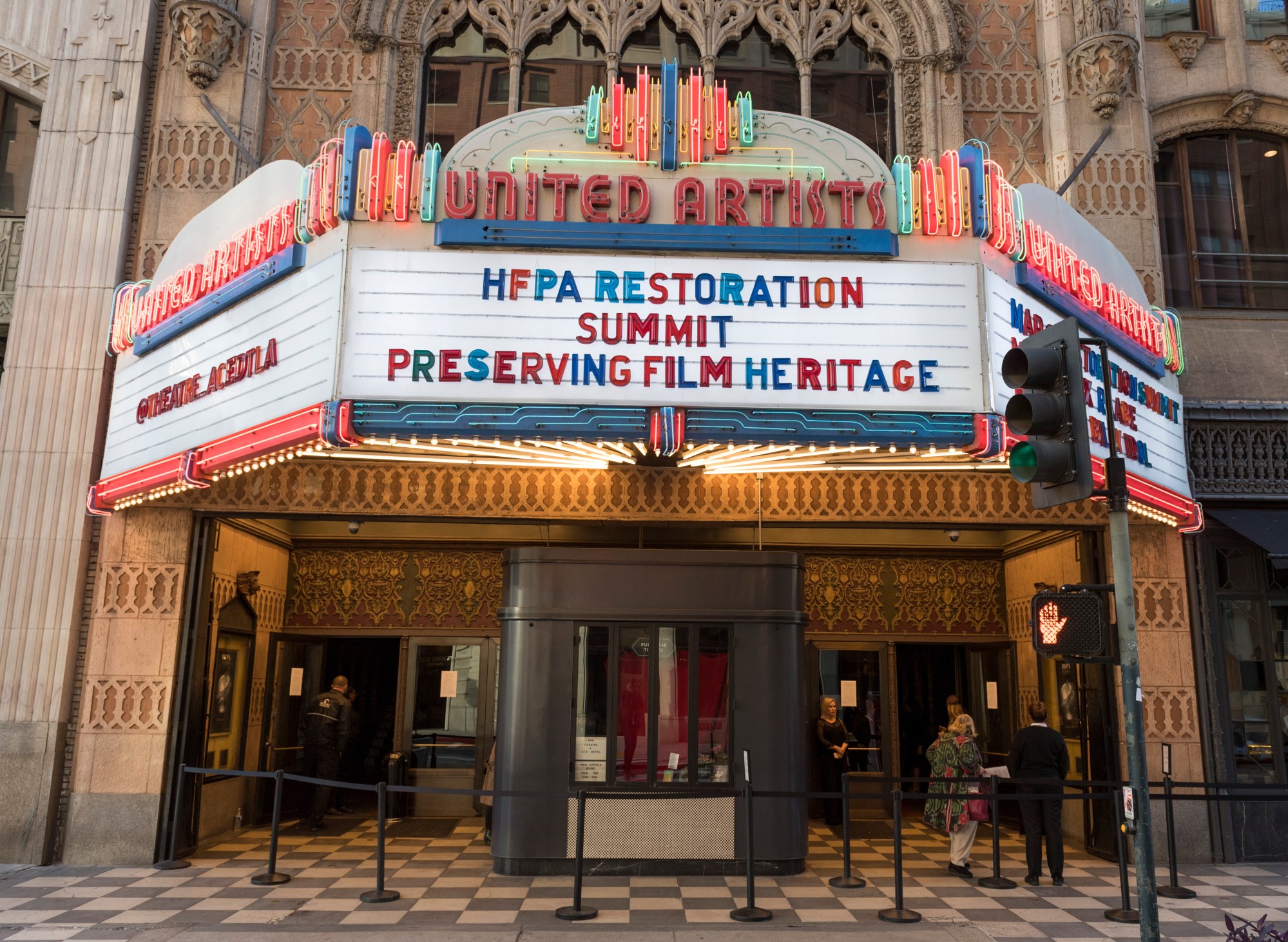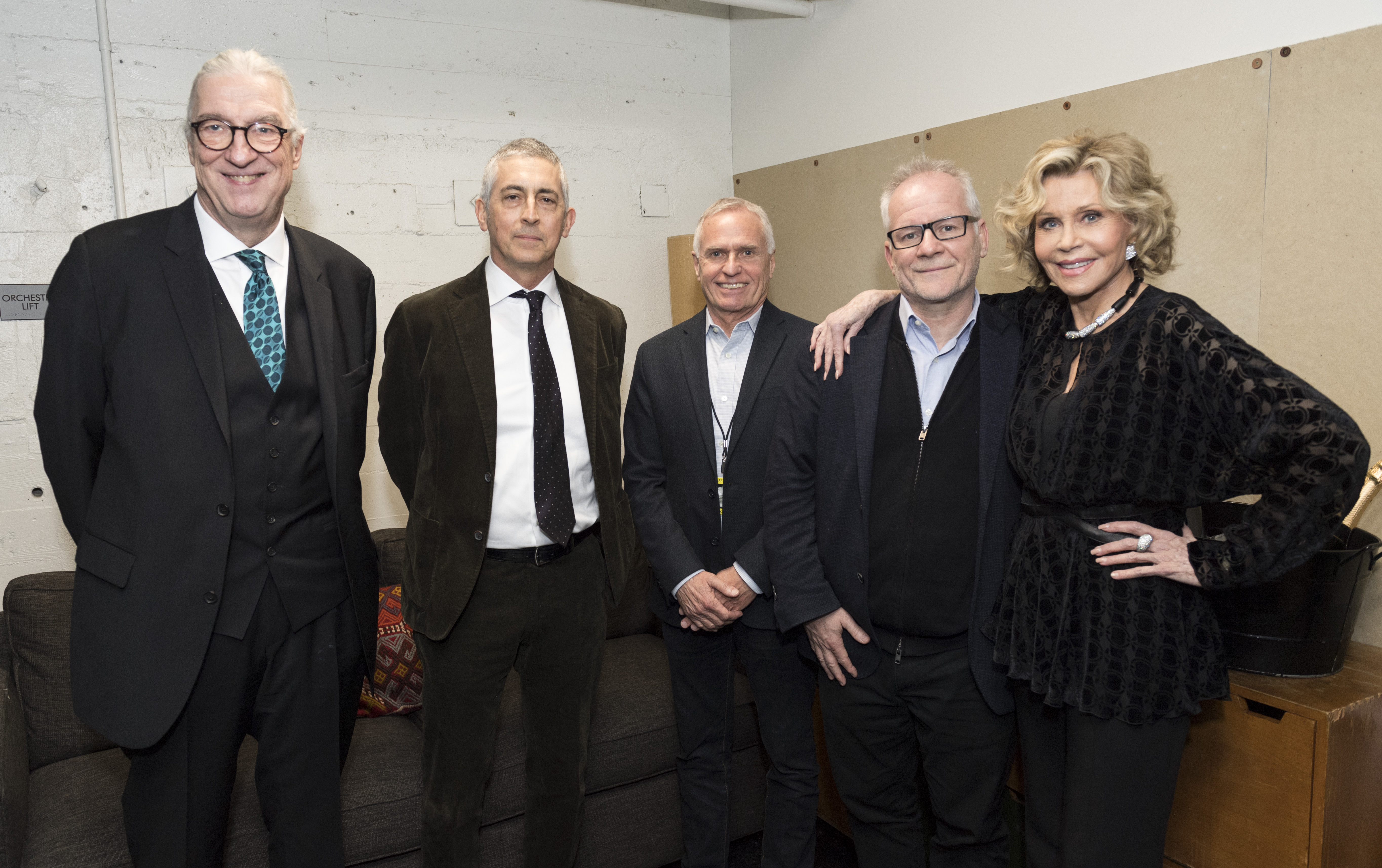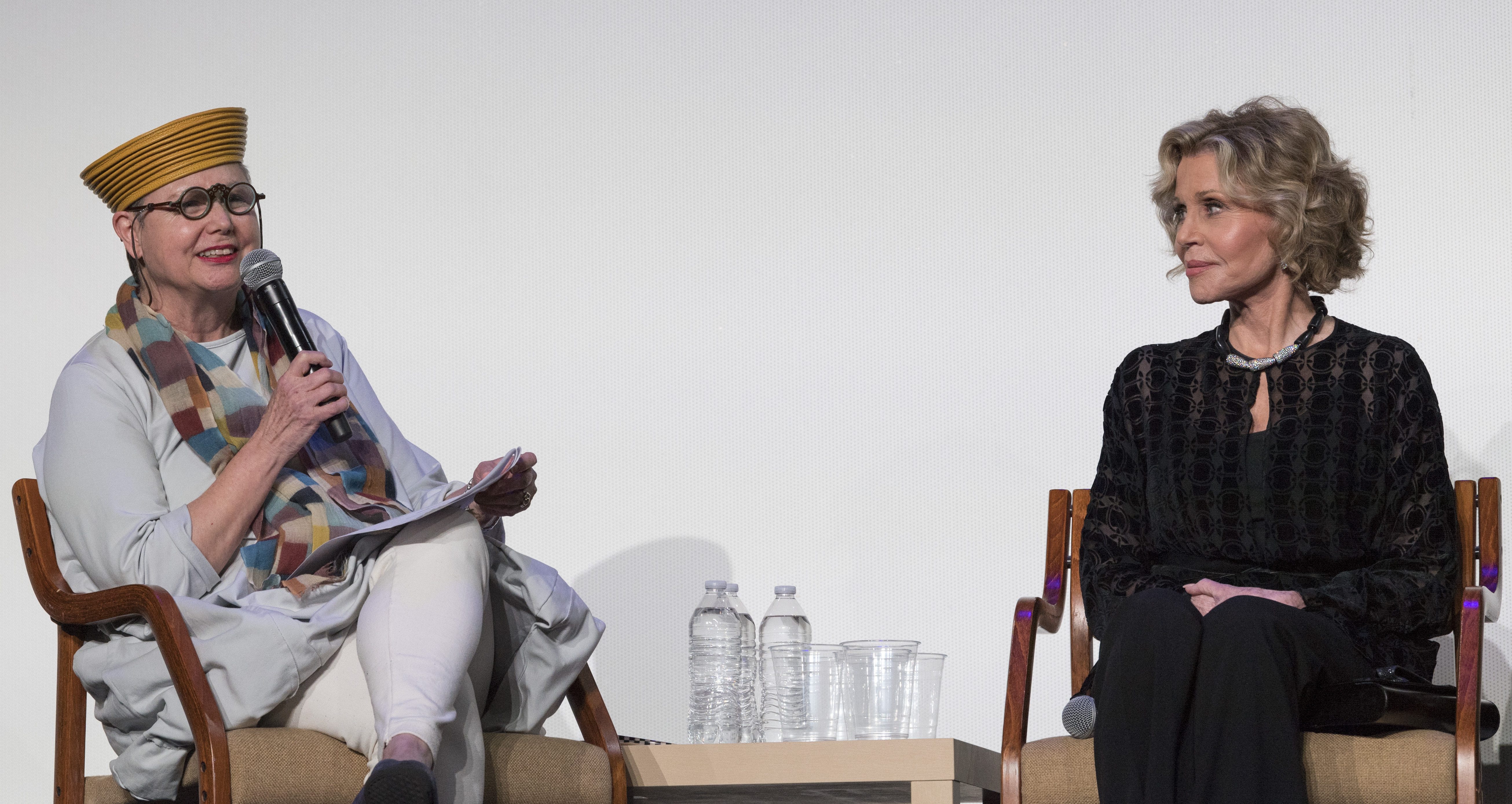
- HFPA
HFPA Restoration Summit: Preserving Film Heritage
The first Film Restoration Summit convened by the HFPA was held on March 9 at the historic Theater at the Ace Hotel in downtown Los Angeles. The building erected by United Artists founders Charles Chaplin, Mary Pickford, and Douglas Fairbanks and specifically its flagship theater, with its ornate a baroque and Hollywood Spanish revival decorations, could not have been more appropriate for a discussion about the crisis facing film heritage around the world. The Library of Congress has calculated that 75% of all silent films ever made have succumbed to decay and are forever lost. Martin Scorsese, the founder of the Film Foundation, estimates that a full 90% of all American films made before 1929 are now gone. And it was with that sense of urgency in mind that the 1927 theater filled with film buffs and fans eager to learn about the challenges of film preservation.
The discussion was led by some of the leaders in the world of restoration: Jan-Christopher Horak, director of the UCLA Film & Television Archive, the second largest archive in the world after the Library in Congress in Washington, with more than 220.000 film and television titles in its collections, and Grover Crisp, director of Asset Management, Film Restoration and Digital Mastery at Sony Pictures and one of the foremost practitioners of the delicate art of film restoration. The panel also included seven-time Golden Globe winner Jane Fonda – someone new to the world of restoration but an essential element in many films that need to be rescued before they disappear forever – and two-time Golden Globe award winner Alexander Payne, not only a great director but also a film buff whose devotion to classic and silent films led to his collecting a dozen prints of Chaplin shorts by the time he was 15. Payne’s interest in classic cinema got him invited by Martin Scorsese to become a board member of the Film Foundation he presides. Thierry Frémaux, director of both the Cannes and Lyon Film Festivals – the latter one of the world’s leading showcases for classic and restored films- came to give a presentation on the ongoing restoration of Lumière Brothers shorts, precious films that document the very birth of the medium. Sandra Schulberg, president of IndieCollect, an organization founded in 2010 with the goal of preserving independent films, expertly moderated the panel. Each participant spoke about the need of save the past for future generations, something that is not always a priority for studios and government institutions, even as 80 % of American silent films made before 1929 and 50% of American sound films made before 1950 are gone for good.
The event opened with HFPA president Meher Tatna calling for a concerted effort against film decay. The HFPA has funded the restoration of over 90 classic movies to date as well as financed the construction of a new projection booth for nitrate films at the American Cinematheque. As Tatna put it: ‘It’s imperative, as film lovers and journalists, for us to help preserve our cinematic heritage, (the films) which document the way we lived, shows us the way we felt, captured the dreams we dreamed and help us understand the experiences of times different from ours, so future filmmakers can be inspired to add to that heritage’.
Frémaux followed Tatna, presenting a few of the shorts from Auguste and Louis Lumière which are being restored to pristine condition with the support of the HFPA. The film critic and director of one of the most prestigious festivals in the world explained that, contrary to what happened to most silent films, the majority of over 1000 shorts created by the Lumières still exist, and they are being cared for so this window to life in the 19th century can be preserved for generations to come. Mr. Frémaux showed a selection of 50 second shorts, including several versions of what is believed to be the first film ever shot in the history of cinema – the workers exiting the Lumière factory, filmed in 1895 – as well as the one with a train entering the station at La Ciotat, which terrorized the naive spectators of the time who believed it was going to hit them.

A panel of experts (from left): Jan-Christopher Horak, director, UCLA Film & Television Archive; writer and director Alexander Payne, Golden Globe winner; Grover Crisp, director of Asset Management, Film Restoration and Digital Mastery at Sony Pictures; Thierry Frémaux, director Cannes and Lyon Film Festivals; Jane Fonda, Golden Globe winner.
magnus sundholm/hfpa
Frémaux reminded the audience that at the time there were several photographers and inventors trying to create cinema, including Thomas Edison, who designed a box that showed a moving image after a customer deposited a coin. But the Lumière brothers had the idea of projecting the moving images onto a big screen in front of the audience, creating a communal experience of cinema. Perhaps the rise of Netflix which some think is taking cinema out of theaters, joked Frémaux, represents the revenge of Thomas Edison. Frémaux demonstrated how the brothers invented comedy, special effects, documentary and the concept of the remake, as well as creating a global phenomenon, sending cinematographers around the world to shoot films in England, Spain, Japan, and Vietnam, which were screened in every corner of the planet. A true connoisseur of early cinema, he explained that Auguste Lumiere had a perfect sense of directing, and over the brief years of his career became a master of how to tell a story in less than a minute.
During the panel that followed, Horak explained how the UCLA Film and Television Archives are working hard to save as many films as they can, with the generous support of the HFPA and many other donors. Not only old American films are recovered, but others that are part of the film history of other countries, sometimes from a recent past. As expected, when Fonda had the mike she delighted the audience telling stories. Never missing the opportunity to tell a joke, she remembered how ‘her favorite former husband’ Ted Turner rescued the archives of MGM and used them to create TCM, sometimes coloring old classics and being criticized by purists for it, but preserving, after all, a treasure that could easily have been lost. She also pointed out how one documentary she filmed in Vietnam showing the opposition of the American troops to the war vanished forever with the apparent help of a friend of then-president Richard Nixon. During the event, Fonda learned that the master copy of director Hal Ashby’s Coming Home -starring Fonda and Jon Voight, who both won Golden Globes for their performances – is not in good condition and in urgent need of restoration.

Sandra Schulberg and Jane Fonda at the HFPA Film Restoration Summit at Ace Theatre in downtown Los Angeles.
magnus sundholm/hfpa
Crisp opted for a practical approach to his presentation, showing how his department at Sony utilizes clever digital strategies and sometimes the delicate handiwork of amazing artists to solve complex problems, including the loss of complete frames. Finally, Payne talked about how he started collecting shorts when he was a teenager and explained that his first film, Citizen Ruth, was in need of restoration, even if it was made in 1996, a year in which many masters had serious problems with sound that made them unusable.
The director of Sideways and About Schmidt also pointed out that the general public is familiar with the Golden Globes as the glitzy show that starts the awards season in January, but not many people know that the organization behind it, the HFPA, uses a big part of the money they receive for it to support not only film restoration but several other cultural and social causes.
The conversation was so interesting that it went half an hour past the original ending time with Schulberg bringing the proceedings to a close by reminding the audience that A Fistful Of Dollars, was not only the title of the restored film whose screening concluded the event but also something the preservation community, always strapped for funds for costly restorations, could use more of – in the form of public donations.